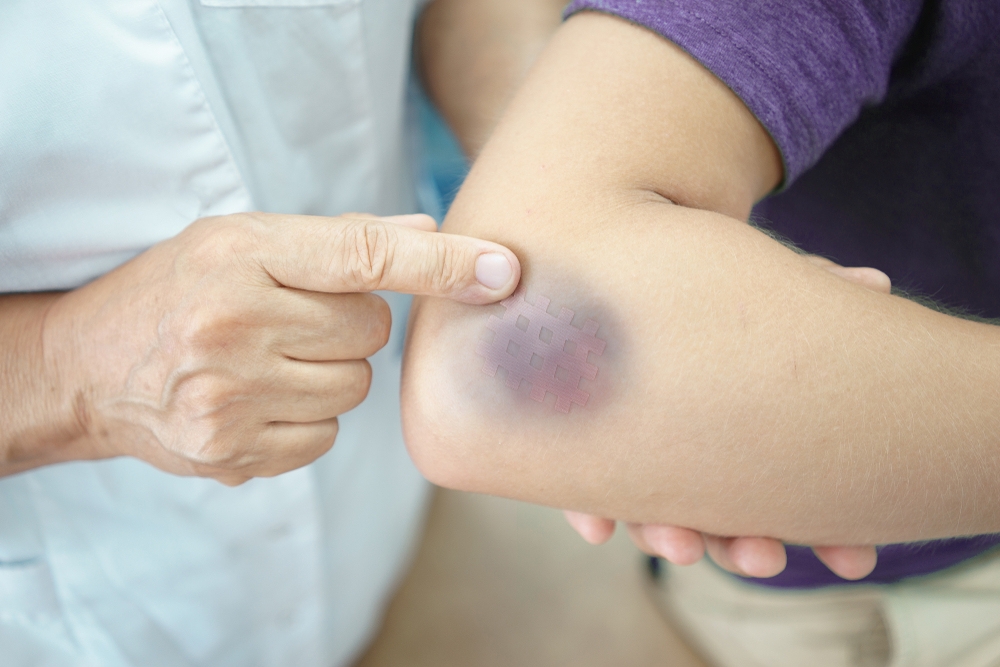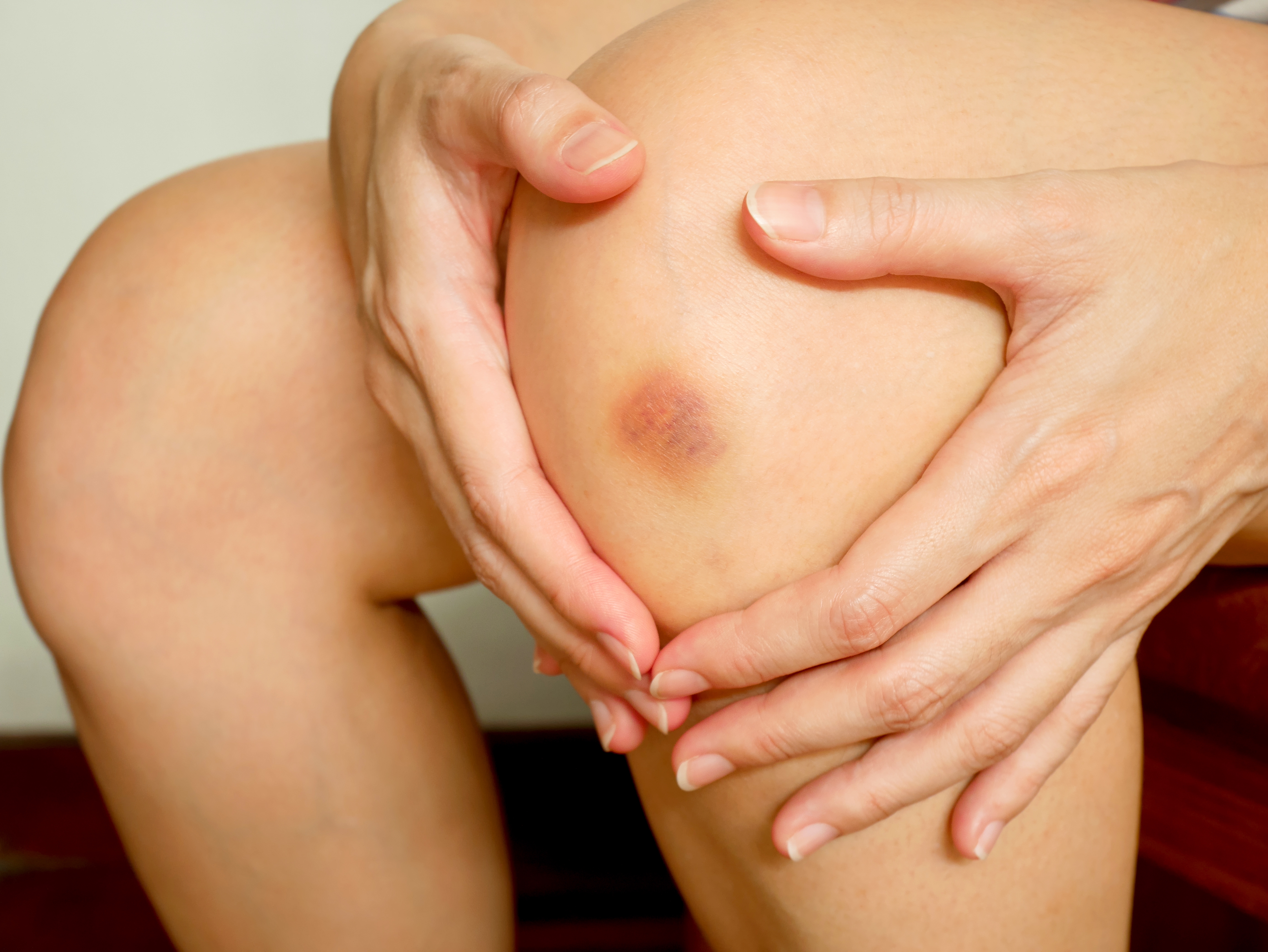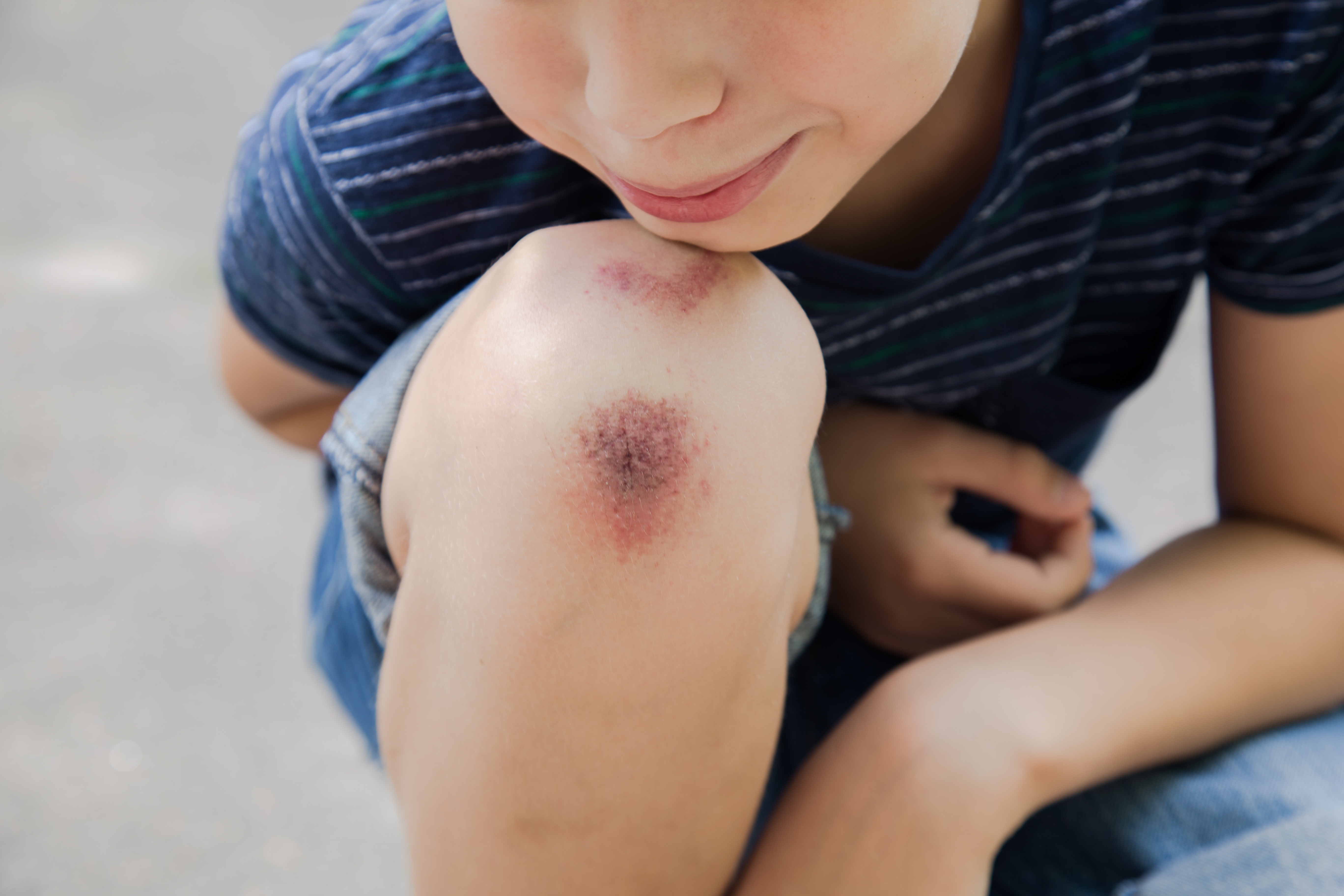
[Wu Qing Block] is something everyone is familiar with. There are always a few times in one’s life that one leaves an ugly mark after bumping and bumping.
However, for some people, their Qing Wu has come so [quietly].
Do you also have such troubles?
How did Qing Wu come into being?

Qing Wu is formed by rupture of subcutaneous blood vessels and leakage of blood cells outside the blood vessels and accumulation in subcutaneous tissues.
People have always seen Qing Wu in different shapes in life. In medicine, according to the diameter of Qing Wu from small to large, we divide it into bleeding spots, purpura and ecchymosis.
The color of Wu Qing is not as simple as [black and blue]. If you look carefully, you will find that, Wu Qing is usually dark red or purple at an early stage, and gradually changes to yellowish brown or yellowish green before slowly receding. This is because red blood cells contain heme, which is continuously catabolized and changed into other substances after leaking from blood vessels, thus producing such color changes.
Qing Wu is the first person to touch it. Why is this?
Normal human body has a very precise and complicated hemostatic system. When the body suffers from external trauma, it will start the [emergency defense system]. To understand why Qing Wu occurs, we must establish a basic understanding of this system.
In short, the system consists of blood vessels, platelets and coagulation factors:
- Blood vessels: Blood vessels of the human body are like riverbanks, and blood is like river water. In our subcutaneous tissue, there are many capillaries invisible to the naked eye. Their average diameter is only 8 microns, 10 times thinner than hair filaments. Blood reaches the tissue through these blood vessels and supplies nutrients.
- Platelets: Platelets in blood vessels are like bricks in dams. They shoulder the heavy burden of [emergency commandos]. When blood vessels break, they will quickly gather to the rupture, blocking the weak parts of blood vessels and avoiding bleeding.
- Coagulation factors: Coagulation factors are like cement. They can tightly adhere platelets together, just as cement adheres bricks together to build hard dams to avoid bleeding.
When a collision occurs, the capillary wall will be damaged. Under normal circumstances, the body will react quickly:
- The blood vessels at the damaged part will contract and close rapidly. Platelets and coagulation factors will also pour in to make concerted efforts to avoid the occurrence or expansion of bleeding.
If the damage is large, before our emergency defense system can fully stop bleeding, some of the blood in the blood vessels will enter our subcutaneous tissue, and this part of subcutaneous hemorrhage will become the Qing Wu we see.
Therefore, for most normal people, Qing Wu will only appear when the collision is strong and causes sufficient damage to capillaries.

Will there be abnormalities in the hemostasis of the human body in what?
For individuals with abnormal defense systems, a slight touch may still appear, even if there is no collision. If you understand the three essential factors to stop bleeding, the reason for the abnormal phenomenon is not difficult to explain.
Increased vascular fragility:
It can be damaged after slight injury, or it cannot be closed quickly due to poor elasticity. For example, the common vascular purpura in the elderly is caused by poor elasticity of blood vessels.
Abnormal platelet count or function:
Without such a [rescue commando] in the body, the risk of natural bleeding will increase accordingly. For example, thrombocytopenic purpura, which is common in young women, is caused by thrombocytopenia.
Abnormal number or function of coagulation factors:
There are many kinds of coagulation factors in the human body, and each performs its own duties. Lack of any one of them will lead to an increased risk of bleeding. The most well-known hemophilia is a hereditary coagulation factor deficiency. Patients usually suffer from bleeding after minor injuries at an early age.
What should I do if I touch Qing Wu?
Although many passages of Korean dramas will take Qing Wu and nosebleeds as the introduction of leukemia for the heroine, in real life, the probability of such incidents is really low.
When you find Qing Wu on your body, you must keep calm. You can initially judge whether you need to go to the hospital through the following steps:
-
Memories: Have you ever collided with Qing Wu?
-
Recall again: whether there has been frequent occurrence of Qing Wu phenomenon in the near future. Whether to take special drugs;
-
Observation: The size, location, distribution and morphology of Qing Wu.
-
Observe again: Apart from Qing Wu, do you have any other discomfort symptoms?
Through the judgment of the above points, it is found that it is only Qing Wu in a single part, and you do not feel any other discomfort. It is recommended to continue observation.
Generally speaking, Wu Qing will be completely absorbed in about two weeks. If you think two weeks is too long, you can speed up the absorption progress by early cold compress (within one day after injury) and later hot compress. However, other folk therapies, such as puncture bloodletting and cupping, have certain trauma and should not be tried.
If you find the following situations in the process of judgment, you must be more vigilant and had better go to the hospital in time.
-
Short time, many parts and large range: many parts of Qing Wu appear in a short period of time, or the range of Qing Wu gradually expands and absorption is delayed;
-
Accompanied by other discomfort symptoms: fever, joint pain, skin pruritus, abdominal pain, hematuria, blackened stool, epistaxis, dizziness and fatigue, yellow skin, etc.
-
It occurs at a young age and has a family history: children and adolescents suffer from large areas of Qing Wu or subcutaneous hemorrhage after minor injuries from an early age, and relatives have the same situation, so be careful of the possibility of hemophilia;
- Long-term use of certain thrombotic drugs: Many patients with cardiovascular diseases may take such drugs, such as aspirin, warfarin, clopidogrel, etc., and these drugs all have certain bleeding risks, which will make you more prone to Qing Wu. If Qing Wu is especially prone to occur during taking drugs, it is recommended to return to a doctor to evaluate whether the drugs need to be adjusted.
The human body is a very precise instrument. It is always protecting us in various ways.
The easy appearance of Qing Wu is a [signal], which can make us more vigilant and seek medical treatment in time. Under normal circumstances, through medical history inquiry and laboratory examination, doctors can find the root cause of Qing Wu, thus symptomatic treatment can be carried out to avoid more serious situations.
Responsible Editor: Huang Lijia
References
< < Clinical Diagnostics > > 1st Edition (People’s Health Publishing House)
This article is exclusively authorized to be used by Clove Garden and refuses any other form of reprinting.
Photo Source: Station Cool Hailuo Creative
